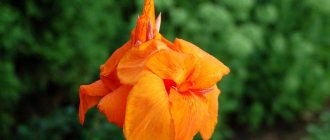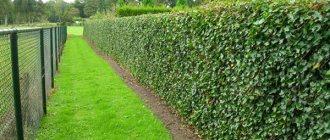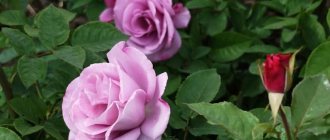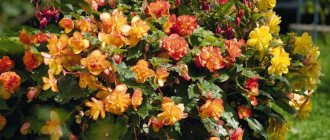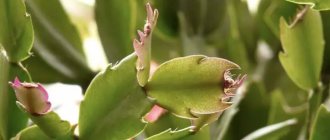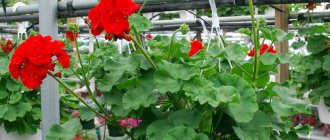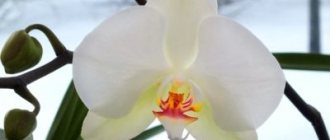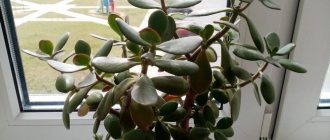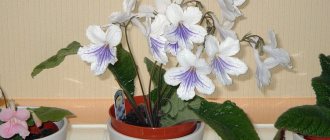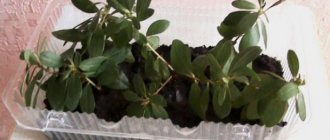September or Virginia aster is a perennial plant that decorates many gardens with lush and bright flowering that lasts until the onset of the first frost. Reproduction, planting and caring for September flowers do not cause any difficulties and do not take much time, which has ensured the plant’s love among many summer residents and gardeners.
September flowers (New Belgian asters): planting, propagation and care
September, October or November are called perennial New Belgian or Virginian asters. The plant received these names due to the fact that it blooms in the fall - from the beginning of September until the very frosts, when almost all other garden crops have long since faded. Unpretentious September flowers with small buds of various colors are very popular; they are planted not only in personal plots, but also in flower beds near apartment buildings.
Answers to readers' questions
What is the lifespan of a plant?
September women are among the top ten among centenarians. They can grow as long as they want if good conditions are provided and protection from harmful insects and infections.
Flower care in winter.
Trim drying bushes to the ground, cover young plants with spruce branches, and leave mature ones open.
As summer comes to an end and gives way to the inevitable autumn with its splendor of yellow and orange tones, you want to prolong the joy of contemplating flowering plants in your garden a little. The completely unpretentious September flowers, which in fact are nothing more than a perennial variety of Virginian or New Belgian aster, can help do this. A distinctive feature of this garden crop is its late flowering, which may not begin until late August or early September. It was this circumstance that gave rise to the name of the September flower. We invite you to learn more about how to plant and care for September flowers in your garden, when to properly replant, water and loosen the soil.
Description of the species
The homeland of Virginia asters is called North America, where several varieties grow in the natural environment with petals of different colors from white to purple. In our country, you can most often find October flowers in lilac shades.
September flowers resemble chamomile in shape. The plant itself is a lush bush, shaped like a pyramid. It has strong trunks, densely covered with foliage. Today, both tall and short varieties have been developed. The most common varieties:
- low-growing - Audrey (with lilac petals), Jenny (red), Snowsprite (white);
- medium height - Elina (pink), Cassie (white), Royal Velvet (purple);
- high - White Lady (white), Desertblue (lilac), Dastyrose (raspberry).
Where is the best place to plant September
It is not difficult to find a place for these flowers - they look good in any corner of the garden. They are good both on their own and in mixed plantings. September flowers decorate the far corners of the garden very well - after the rest of the flowers have faded, September trees will delight you with their lilac petals for a long time.
If you want to make mixed flower beds, you should not plant low annuals such as petunias or pansies next to the September flowers - an active perennial will quickly crowd them out, taking up all the free space. It is preferable to plant the same drought-resistant and unpretentious flowers next to September - for example, medium-sized chrysanthemums.
But these plants still look best in single plantings, or as a border flower.
Planting in open ground
September flowers do not require special conditions for planting, propagation and care. Almost any area is suitable for culture. It will feel good in single plantings, in mixed plantings, and as a border plant. The only thing is that it is not recommended to plant flowers too close to other representatives of the flora, since Virginia asters take all the moisture from the soil during drought, which can lead to deterioration in the development or even death of neighboring crops.
Septemberflowers feel best in areas open to sunlight but protected from winds. It is best to plant plants in spring or autumn. When planting flowers in the fall, you should time the procedure so that the seedlings have time to get stronger before the onset of cold weather.
Almost any soil is suitable for planting Octobrist flowers , with the exception of loam. Gardeners recommend preparing the area for planting in advance. In 2-3 weeks, the soil should be dug up and organic and mineral fertilizers added to it.
Before lowering the seedlings into the holes, the soil should be moistened. Plants placed in holes should be evenly sprinkled with soil, then compacted well. Planted Septembers need to be watered once every 2 days. When they get stronger and begin to grow, the frequency of watering can be reduced. When planting in autumn, it is necessary to reduce it.
What difficulties arise during the growing process?
Even unpretentious plants can cause difficulties, September flowers are no exception.
Gardeners noticed that the seeds did not germinate well. Even if you follow agrotechnical recommendations, the probability of germination is minimal.
These flowers cannot be planted after nightshade, tulips, carnations, gladioli and gillyflowers. Difficulties with diseases and fungal infections may occur.
Without nutrients and mineral fertilizers, September flowers bloom small and the color becomes pale.
Otherwise the flower does not cause problems.
Features of care
September flowers do not like excessive humidity, so it is enough to water them once a week. It is advisable to use warm (not colder than air temperature) and settled water for this purpose. In addition to watering, New Belgian asters will require regular weeding and loosening of the soil. Caring for September flowers includes fertilizing. There will be several of them throughout the year:
- in early spring, nitrogen-containing fertilizers should be added to the soil;
- Potassium fertilizers are applied in June-July;
- During flowering, the plant requires phosphorus fertilizers.
To make flowers look neater and bloom better, they should be trimmed in a timely manner - remove dry buds and leaves. When the flowering period ends, the September trees should be trimmed so that small stumps about 3 cm high remain. In this form, the plants will better withstand the cold. Virginia asters are frost-resistant, so there is no need to take additional measures to prepare for the winter period for adult flowers. Young bushes can be insulated with fallen leaves, peat, compost or spruce branches.
September flowers are quite resistant to diseases and pests. The most dangerous disease for them is considered to be powdery mildew, which can be transmitted from plant to plant through water, tools, and even through the air (with spores). A sign of infection is the appearance of a white coating resembling dust. If it is detected, the plant should be immediately treated with copper-containing fungicides.
To prevent the disease, gardeners advise periodically treating with copper sulfate or Bordeaux mixture. To prevent the appearance of pests (aphids, spider mites, meadow bugs), it is recommended to treat plants with insecticides.
Reproduction and transplantation
September flowers are propagated in several ways - by dividing the bush, seeds and cuttings. Many gardeners call dividing the bush the most convenient and effective method of propagation.
September trees need to be divided and replanted every 3-4 years. Transplantation is carried out in early spring or autumn. The aster bush needs to be completely dug up and divided into sections. Each section of the root system should have several living buds.
Propagation by seeds involves growing seedlings yourself. In temperate and northern latitudes, it is unlikely that you will be able to collect planting material on your site, since the seeds do not have time to ripen. Because of this, you will have to go to a specialized store to buy seeds.
Seeds should be planted shallowly in the soil (maximum 5 mm). When they are planted, the soil should be moistened with a spray bottle. After this, the containers must be covered with film or glass. To grow seedlings, it is necessary to provide proper conditions - temperature conditions from +22 to +25 ° C and diffused lighting.
For 3-4 weeks, until sprouts appear, the containers should be kept under film, periodically opening them for watering (spraying) and ventilation. When the sprouts have 2 true leaves, they need to be planted in separate pots. 10-14 days after transplanting, seedlings should be fed with complex mineral fertilizer.
From mid-April, you can begin to harden the seedlings - take them out into the open air every day for 20-30 minutes. In May, it is recommended to plant the plants in open ground.
To divide by cuttings, you need to cut off the side shoots of the bush. They must be placed in water until root shoots appear (as a rule, roots appear after about 20 days). Next, the seedlings can be planted in open ground.
Use in landscape design
Lush and elegant bushes of New Belgian asters are perfect for creating flower borders and hedges; they can also be placed on the lawn. November flowers look good planted in one row along the paths.
September flowers will be an excellent accent in the center of a flower bed in combination with low-growing flowers, for example, chrysanthemums, the proximity of which is assessed very favorably. Mixborders made from varieties of Virginia asters with different bud colors will look great.
Planting and caring for September flowers will not cause any difficulties. These plants can become wonderful garden decorations. Their bright buds look very advantageous against the backdrop of an autumn garden. In addition, cut flowers can stand in water for up to two weeks.
Trimming
The peculiarity of the New Belgian aster is that there is no need to form a bush. It is spherical in shape and blooms luxuriantly.
During the season, it is enough to carry out sanitary cleaning - trimming dried inflorescences and dry stems.
For wintering, the entire above-ground part is cut off at the root.
General information
In some sources it is also called the New Belgian aster. September flowers are native to North America. The ideal climate for them is temperate.
The September bush is shaped like an inverted pyramid. Its powerful branched stems are covered with dense foliage and many small flowers. One bush can have more than 200 buds at once. The plant blooms before the onset of frost, and caring for it is simple and will not be difficult. Flowers have no smell.
Gardeners have developed many varieties of September flowers. Some of them are low, squat, no more than 40 cm in height. Others are tall, reaching up to two meters.
- Short or dwarf: pink-purple September Audrey, scarlet Jenny, white Snowsprite.
- Medium-sized: rich pink flowers of September Ellina with a diameter of 5 cm, white flowers of Cassie with a diameter of 3 cm, the purple-gray shade of Royal Velvet gives the plant a “glow” feeling.
- Tall: white inflorescences with a yellow center in the September White Lady, blue-blue September Lady in Blue, ash-pink flowers arranged in two rows in the September Dick Ballard.
The highest representatives are Sunset (1.2 m), September Rubin (1.4 m), Konstanz (1.8 m).
Dwarf
Medium height
Tall
| Height | The best varieties | Description |
| Audrey | Lilac-pink flowers | |
| Jenny | Small bushes with red flowers | |
| Snowsprite | White flowers | |
| Elina | Bright pink flowers 5 cm in diameter. | |
| Cassie | Very dense covering of the plant with snow-white flowers | |
| Winston S. Churchill | Ruby color | |
| Royal Velvet | The flowers seem to be illuminated thanks to their violet-gray color | |
| White Lady | White flowers with a yellow center. The bush is 1 meter high | |
| Desertblue | Purple-blue inflorescences | |
| Dastyrose | Delicate crimson flowers | |
| Amethyst | Semi-double flowers painted lilac | |
| Dick Ballard | The flowers consist of several rows of soft pink petals |
September flowers are a very unpretentious flower. In spring, the plant's sprouts come out of the ground and the only thing that can be done for a beautiful composition is to trim the bush so that it does not grow too much, but maintains the desired shape. Once every 4 years, you can update the flower row.
Varieties, September tall and low growing
Breeders have bred two types of Virginia aster:
- short;
- tall.
The following varieties are considered popular.
| White Lady | This is a tall species, as it reaches a height of more than a meter. The flowers resemble a large chamomile, as they have white petals and a yellow center. |
| Amethyst | The height of the bush is no more than a meter. The flowers have a dark purple color and a semi-double surface. The leaves are light yellow. Amethyst blooms for just over a month. |
| Dick Ballard | Also refers to the tall species. Height – 1 meter. The flowers are neatly arranged in several rows and have an attractive pink color. |
| Sunset | With proper care, the height of the bush can reach 120 centimeters. The inflorescences are densely arranged and have a bright crimson hue. |
| Elina | Belongs to a low-growing variety, the height does not exceed 80 cm. The flowers are large, bright pink in color. |
| Cassie | The inflorescences are white, no more than 3 centimeters in diameter, the height of the bush is up to 85 cm. |
Which variety is better is up to the owner to choose; it all depends on the landscape and personal preferences.
Home care
Watering
Young flowers must be watered regularly and abundantly for two weeks from the moment of planting. An older plant can easily tolerate drought.
It can be watered rarely, but abundantly.
Top dressing
September flowers are unpretentious, but to maintain lush flowering in the first year it is better to fertilize them. The plant is fed in the spring with potassium and nitrogen fertilizers, and in the summer potassium and phosphorus are used several times as top dressing.
Trimming
The bush is pruned when it grows very much. Give it the desired shape. In addition, pruning stimulates growth. Before wintering, it is customary to cut the bush down to the very base. All excess foliage and faded flowers are removed. The plant tolerates winter well, so it does not need shelter.
TIP: If you want the plant to live as long as possible, do not forget to remove weeds and loosen the soil
Organization of wintering
Before wintering, the stem must be cut to the ground, fallen leaves must be collected with a rake and burned along with the cut stem.
Now wood ash is poured into the soil in the following proportion: 100 grams of ash per 1 square meter. This will saturate the soil with potassium and reduce its acidity.
Young shoots can be covered with peat and sprinkled with spruce branches or leaves until the first frosts appear. Adult September flies do not need additional shelter.
Reproduction
Seeds
Ready-made seeds are bought in the store. It is recommended to plant seeds in February. They are poured into a small mold with soil to a depth of half a centimeter. Sprinkle with a little earth and water with water. Then the seedlings are covered with film to create greenhouse conditions. After the first leaves appear, the September leaves are planted in different containers. After 10-14 days, flowers can be planted in open ground.
Division
In the spring the bush is dug up. The root system is divided into 2-4 equally sized parts and planted separately. All unnecessary, dried leaves, shoots and flowers can be removed. This method is quite simple and suitable for everyone.
Cuttings
This is a complex, labor-intensive process that requires attention and time. The cut stalk must be carefully treated with a special powder. Then they plant it in a small container with soil, and cover it with a plastic bottle on top like a cap. Water the cutting from the edge. After 3-4 weeks, the shoot begins to harden, increasing humidity.
It will be possible to plant September flowers in open ground only after a year.
Diseases and treatment
| Diseases and pests | Signs | Treatment |
| Powdery mildew | A white coating similar to dust. The leaves turn yellow and fall off. The disease spreads very quickly. | Fungicides. Medicines "Skor", "Topaz", "Vectra". |
| Blackleg | The stem turns black starting from the base. Appears due to excess moisture and high temperatures | Dig up the infected bush and destroy it. For prevention, treat young shoots with Previkur. At the first symptoms of the disease, treat not only the plant, but also the soil with the drug. |
| Fusarium | The leaves wither, turn yellow and fall off. | |
| Meadow bugs |
Spider mites
Aphid
Botanical description of the New Belgian aster
New Belgian aster is a bushy perennial herbaceous plant with highly branched stems covered with numerous small flowers. Medium-sized and tall varieties of Virginia asters are in particular demand among gardeners.
September flowers are white, but varieties in blue shades are especially popular. Photo: ok.ru
The rhizome of New Belgian asters is branching, creeping, the stems are thin, numerous, and densely leafy.
The leaves are entire, lanceolate or oblong-lanceolate, long, shiny, dark green.
Inflorescences are baskets in diameter, the color is lilac, lilac, pink, white. Flowers appear around the beginning of autumn and last until hard frosts.
In landscape design, New York asters are used in group and single plantings, in borders, along alleys and roads, on the south side at the foot of ornamental shrubs.
Features of growing September flowers
Virginia asters are planted in places well lit by the sun, protected from cold winds, where flooding by melt or rainwater is unlikely.
The place where September flowers grow should not be flooded with melt water
September flowers grow in one place for many years, so the soil is prepared according to all the rules:
- Deep digging of soil using a spade bayonet;
- The soil should be light, loamy, slightly acidic or neutral, so do not overdo it with peat;
- The distance between neighboring bushes is at least 25 cm for medium-growing September varieties, and at least 40 cm for tall varieties.
Despite their frost resistance, it is recommended to plant September seedlings in open ground in May, when the threat of severe frosts on the soil has passed.
Reproduction of September
Like other perennial plants, September flowers can be propagated by seeds, cuttings, or dividing the bush. The simplest and most effective method is dividing the bush; other methods are ineffective and labor-intensive.
It is best to propagate September flowers by dividing the bush.
New Belgian asters are propagated by seeds only if there are no friends nearby who can give you several divisions or cuttings. In this case, it is necessary to grow September seedlings in seedlings so that the seedlings have time to take root well over the summer. Sow seeds for seedlings in March-April and grow as usual.
You can divide the September bush without digging, simply cutting off parts from the rhizome with a sharp shovel. The vacated holes are covered with fertile soil and watered.
Unpretentious September autumn flowers
The many-sided September-October flowers will be appropriate anywhere in the garden because of their discreet beauty and long, late flowering, when other inhabitants of the garden have long since retired.
It is only important to choose the right asters in height and then it will be possible to create a mixed mixborder from only asters, although plantings with other flowers are also very beautiful. Last year, after reading that they are frost-resistant, I left one bush outside
She wrapped it in straw and dry leaves, dug up two bushes, put them in pots and put them in the cellar. The one that spent the winter outside did not even come out in the spring, but shoots sprang up in the cellar. Not every winter is snowy.
Over the summer, the bushes double in width. Amazing September flowers are not afraid of frost and produce new shoots in the spring. By dividing the bushes in autumn or spring, September flowers are propagated. If watering is infrequent, the bushes will be shorter. Perennial asters bloom amazingly. For now, crimson September flowers are still exclusive in our gardens. September flowers are one of the latest flowers in the garden, delighting us with their bloom when yellow leaves are already falling from the trees.
It is not for nothing that perennial asters are also called September asters, October asters and even November asters - they delight with their small but lush flowers until late autumn, right up to persistent frosts. The perennial aster is a tall plant, up to 200 cm high. There are compact, low varieties. The flowers can withstand partial shade, but grow better in sunny areas. They quickly lose their germination capacity and do not always ripen on the bush. Perennial aster bushes can be divided in both spring and autumn. It is advisable to provide the flower with watering during budding.
Bush aster (Aster dumosus, Symphyotrichum dumosum). See photo of the bush aster in my garden below. From my own experience I will say that this is one of those plants that you remember when it begins to bloom, the shrub aster is so unpretentious. Aster Frikartii (Aster × frikartii) is a hybrid of the Italian aster and Thomson's aster. It is believed that Frikart asters took the best features from both parents: large flowers, long flowering from mid-summer to mid-October and unpretentiousness.
Aster Novobelgian - can be of different heights depending on the variety. The leaves of the New Belgian aster are devoid of pubescence. Aster New England is taller than New Belgian, the bush is more powerful and spreading, it has more leaves and flowers. Bushes of this variety take longer to grow.
